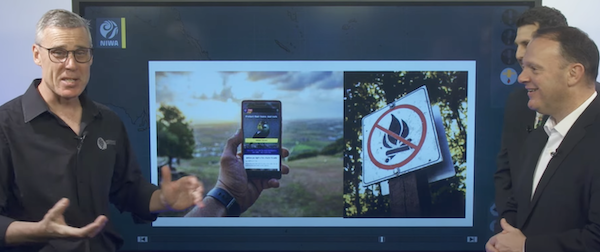Prepare for hot and dry Central summer
Anna Robb
06 December 2023, 4:30 PM
 Hot temperatures and windy conditions are forecast for summer, meaning cooling off in Central’s rivers, like the Manuherikia, is a must for many locals and visitors. PHOTO: Tourism Central Otago.
Hot temperatures and windy conditions are forecast for summer, meaning cooling off in Central’s rivers, like the Manuherikia, is a must for many locals and visitors. PHOTO: Tourism Central Otago.Central will feel the atypical impacts of an atypical El Niño weather pattern according to NIWA, which released its seasonal climate outlook for summer last week.
Forecasters said there would be more variability, but after a wetter start to the month conditions are looking to turn drier and hotter.
NIWA Meteorologist Chris Brandolino said dryness and the potential for drought was a concern for some parts of the country, potentially in the second part of the summer.
NIWA said the risk for dry spells might contribute to water restrictions for areas that had not had them in recent years. Otago was a region NIWA included as having a risk for dry spells.
NIWA meteorologist Ben Noll said sometimes December can get a bad wrap for not quite being a summer month.
"This year the signals . . . look like there will be some hot temperatures in the weeks to come."
The wind strength is forecast to be above normal across most of the country and for inland Otago seasonal winds are expected to be stronger than normal.
Soil moisture levels and river flows are about equally likely to be near normal, with 40 percent chance, or above normal, with 35 percent chance.
Experts said a high to the east would bring heat in mid-December, with warm air coming across the Tasman and bringing what would feel like later summer conditions.

Temperature forecast for December 2023 - February 2024. PHOTO: NIWA
Ben said forecasters were keeping an eye on what could become the third tropical cyclone of the season, forming near the Solomon Islands.
“It looks to stay away off to the North.
"However, the signs are that this could help to pump up this ridge of high pressure to the south . . . keeping us locked into the drier and warmer conditions.
“The week that contains Christmas is favoured to be drier.
"After a tough spring, a tough year, some good weather during the holiday season would go a long way for Mother Nature making up for lost time for some of that difficult weather she’s dealt us this year.”
Fire and Emergency New Zealand (FENZ) national wildfire manager Tim Mitchell said generally across the country there were low fire risk conditions.

Pictured (from left) Tim Mitchell, Chris Brandolino and Ben Noll (at back). PHOTO: Supplied
“Low risk doesn't mean no risk, windy conditions and high temperature days has led to a few fire escapes . . . so certainly still watch the conditions.
“The conditions haven’t been great for hay making at the moment.
"If you’re thinking about making hay this season, maybe baleage or silage might be a better option, or if you’re going to bail it, pick your window.
“Watch those hay stacks after, that two to seven week period after, monitoring that heat buildup, if it’s getting too hot give us a call let us know and we’ll come down and give you a hand.
“Don’t store it next to other valuable areas like your equipment sheds.”
Read more: Efficient use of water now, could save.
Read more: Wildfire risk: Central Otago prepares for fire season.
For fire rules and safety tips, check out The Central App’s Fire Rules link under Roads l Weather l Reports.





